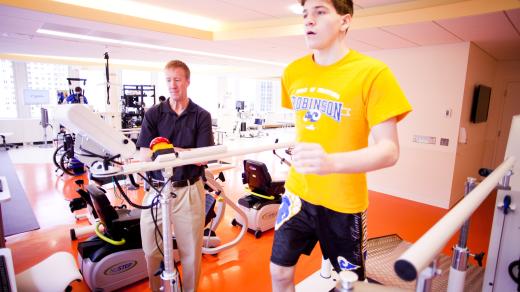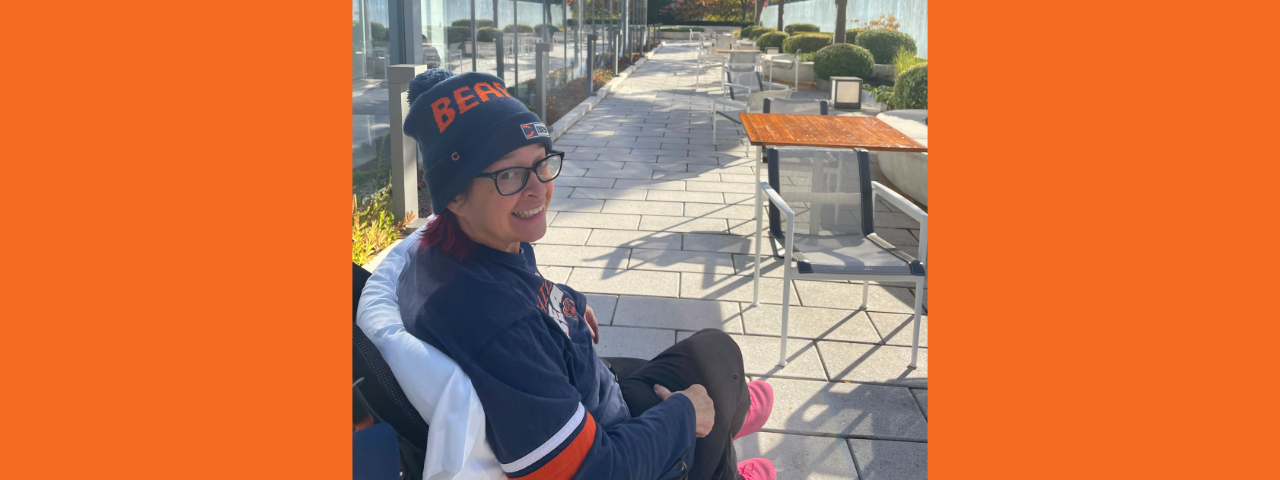Body
Blisters—the bane of marathoners everywhere—affect Chicago’s Beau Zanca more than most runners. But his aren’t only due to new shoes or rough socks. He’s far more susceptible to slow-healing blisters because of the wounds he sustained in a house fire, which left about 60 percent of his body covered in third- and fourth-degree burns two and a half years ago.
Fortunately, he’s also uniquely well-prepared to deal with abscesses. Zanca, now 25, went home from the hospital a little over two years ago well versed in wound care, with nurses on speed-dial and supplies of creams and bandages that still haven’t run out.
That healing process has taken him far from his bed at from Stroger Hospital, where he spent three months in a medically-induced coma, to the starting line of this weekend’s Chicago Marathon.
It all began on April 15, 2016, when Zanca went to a Cubs game, crashed on a friend’s couch, and woke up to a room filled with smoke. When he opened his eyes again, he was in the hospital. His left hand was burned so badly his bones fused together, he was breathing through a tube, and he’d lost nearly 50 pounds, mostly of muscle mass (after first gaining 40 when doctors pumped his body full of fluids).
“I definitely questioned, ‘How am I really ever going to get kind of back to my old self?’” he said to Runner’s World in a phone call. “I was in a really tight spot, and mentally I was pretty checked out at that point of life. I really was kind of not about it.”
The support of his friends, family, and medical team pulled him through: “I had a lot of people motivating me. My mom would be there every day. It was people in my ear just telling me you can get better, and you will, you gotta just kind of trust what’s going to be put in place for you.”
By July, he was ready for inpatient physical therapy at Chicago’s renowned Shirley Ryan AbilityLab. Most basic tasks, like getting out of bed, eluded him. His skin and many of his muscles, including those in his calves, were extremely tight, and his heart rate was elevated, likely from a combination of shock and deconditioning. He couldn’t form a full smile, either, said Bridget Fowler, his physical therapist.
I really did get a second chance; I should be dead. So what am I going to do now that I'm not.
Beau Zanca
Body
Fowler’s goal is to prepare patients to return home safely, but the path for Zanca to do so seemed murky at first. She set conservative targets, but once Fowler started working with Zanca, his athletic mindset—he’d played football at Mount Prospect High School and at the DIII University of Wisconsin-Plateville—propelled his progress more swiftly than she’d expected.
“The unique thing about Beau that I wish I could see in all of my patients is the kind of determination and dedication as well as motivation he had to push himself and to succeed and reach his full potential,” Fowler said. “I think it really takes a special personality to go through something as traumatic as he did and turn it around for the positive.”
The team at Shirley Ryan AbilityLab fitted Zanca with orthotics, monitored his blood pressure and heart rate, and worked to safely push him into higher-intensity exercises. He stretched and strengthened his skin and muscles daily. Yoga—a habit he’d first picked up as a high-school football player—became a daily ritual. He headed home just a month later.
Zanca recalls walking with a walker soon after starting therapy. They asked him to go 10 feet; it felt like 10 miles.
But by August, he was able to transition to outpatient rehab at an affiliated facility in suburban Wheeling, where he soon progressed. For eight months, he spent three hours a day there.
“That’s where I really caught my stride, literally and figuratively,” he said. First it was a slight jog, then a faster one, then a few sprints. He ran his first mile in 12 minutes, then a couple miles at a time.

